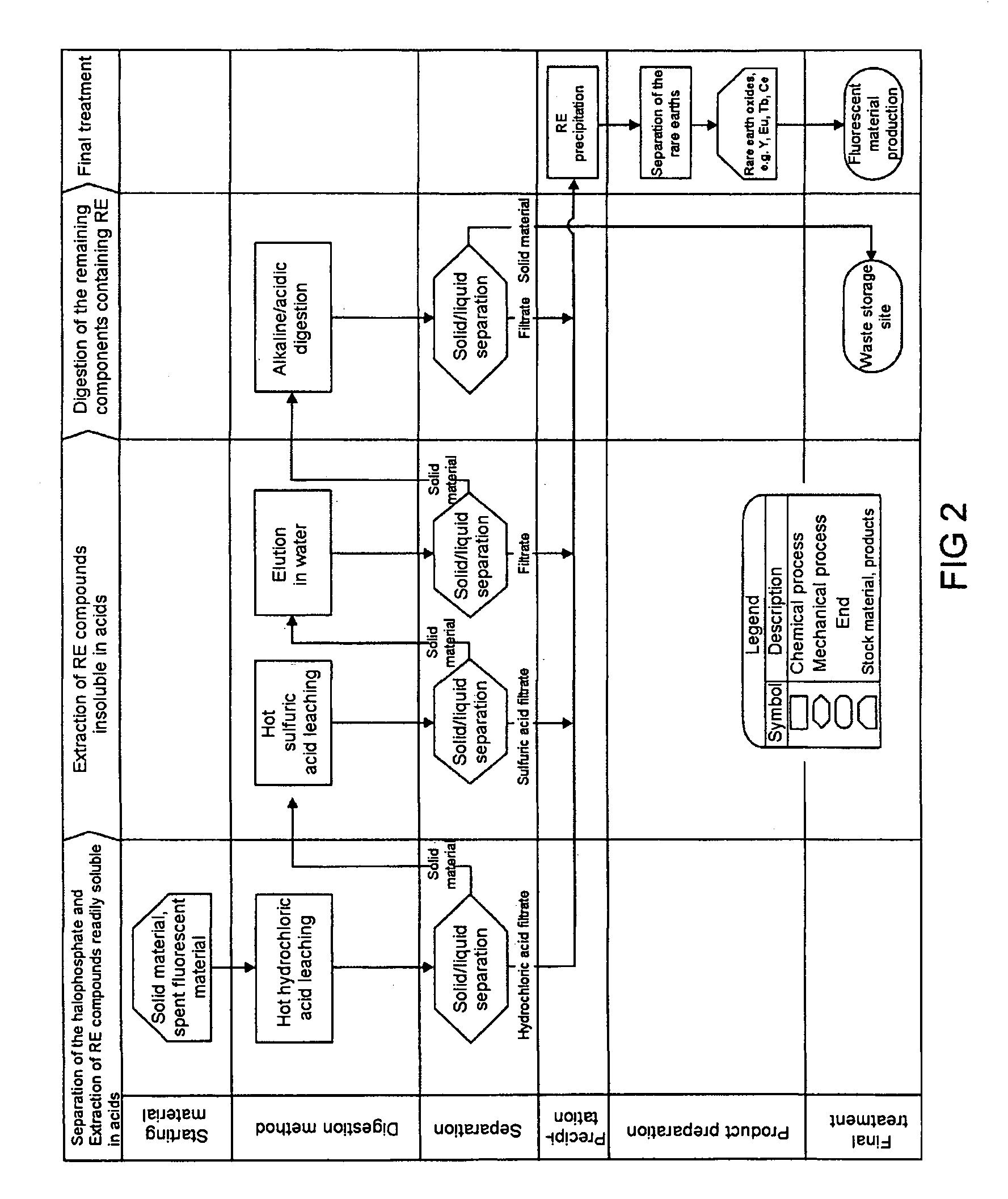Method for recovery of rare earths from fluorescent lamps
a fluorescent lamp and rare earth technology, applied in the field of rare earth recovery of fluorescent lamps, can solve the problems of reducing luminous efficiency, inability to manufacture fluorescent lamps, and inconvenient use of rare earth oxide mixtures in fluorescent materials
- Summary
- Abstract
- Description
- Claims
- Application Information
AI Technical Summary
Benefits of technology
Problems solved by technology
Method used
Image
Examples
Embodiment Construction
[0014]It is an object of the present invention to provide a method which makes it possible to recover elements such as terbium, europium and yttrium for use in fluorescent material production.
[0015]This object is achieved by the characterizing features of claim 1.
[0016]Particularly advantageous configurations may be found in the dependent claims.
[0017]A fraction containing fluorescent materials, which are separated from the lamp bulb, is obtained when recycling fluorescent lamps. This fluorescent material powder is obtained as a mixture of halophosphate, three-band and other fluorescent materials, which inter alia is contaminated by glass slivers and metals and—to a varying degree—with mercury. Direct recycling into the production process is therefore not possible. Fluorescent material waste, about 250 to 300 tonnes per year in Germany, has previously been put into underground storage owing to its toxicity and the insufficient reprocessing possibilities.
[0018]It represents a not inc...
PUM
| Property | Measurement | Unit |
|---|---|---|
| width | aaaaa | aaaaa |
| particle sizes | aaaaa | aaaaa |
| width | aaaaa | aaaaa |
Abstract
Description
Claims
Application Information
 Login to View More
Login to View More - R&D
- Intellectual Property
- Life Sciences
- Materials
- Tech Scout
- Unparalleled Data Quality
- Higher Quality Content
- 60% Fewer Hallucinations
Browse by: Latest US Patents, China's latest patents, Technical Efficacy Thesaurus, Application Domain, Technology Topic, Popular Technical Reports.
© 2025 PatSnap. All rights reserved.Legal|Privacy policy|Modern Slavery Act Transparency Statement|Sitemap|About US| Contact US: help@patsnap.com



